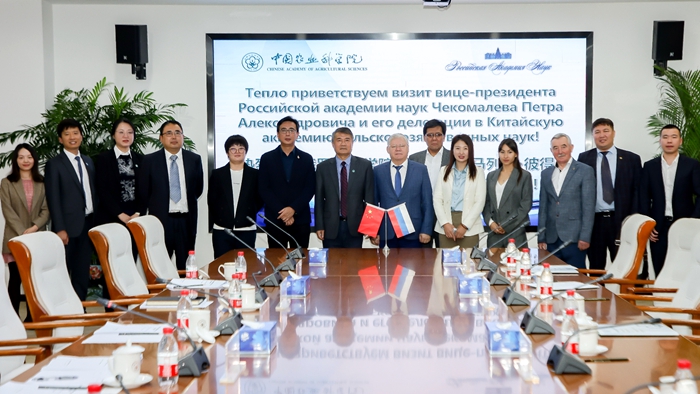ICS elucidates the molecular mechanism of indica -japonica hybrid sterility, unveiling the mystery of rice reproductive isolation
Reproductive isolation (RI) is a biological mechanism that restricts gene flow between divergent populations, and thus contributes to speciation. Hybrid sterility (HS) is one of the widely-studied form of post-zygotic RI in fungi, plants, and animals. In rice, HS is generally observed in the inter-subspecific hybrids between indica and japonica of the Asian cultivated rice (Oryza Sativa) , which is one of the main obstacles preventing the utilization of the inter-subspecific heterosis. HS is usually underlie by toxin-antidote (TA) elements that cause biased transmission by killing the non-carriers and thus subverting Mendel’s law of segregation. In rice, although several HS loci have been studied in genetics and characterized as toxin-antidote elements, the underlying molecular mechanisms of these systems remain elusive. Actually, even in well-studied model organisms, such as flies and mice, few HS phenomena have been understood at the molecular level. Nevertheless, the cloned TA elements share no homology with each other, it is still worthy to quest whether they might have converged on some common mechanisms.
Recently, a scientific research team led by Prof. Jianmin Wan from Institute of Crop Sciences, Chinese Academy of Agricultural Sciences (ICS-CAAS) published their latest research findings relative to hybrid sterility between indica and japonica in rice in the journal Cell . Researchers conducted genetic analysis on the male sterility of hybrids between indica and japonica, and explored the genetic and molecular mechanisms of the most significant locus, RHS12. In addition, the evolutionary trajectory and distribution of RHS12 in the genus Oryza was also analyzed (Figure 1). This achievement is expected to solve the problem of hybrid sterility in the utilization of heterosis between indica and japonica rice. What’s more, it will deepen the understanding of the mechanism of reproductive isolation at the molecular level and is helpful to solve the problem of hybrid sterility in the utilization of heterosis between indica and japonica.
Based on the map-based cloning approach, researchers conducted systemic genetic analysis on RHS12 and demonstrated that the locus encodes a TA system consisting of two genes, DUYAO and JIEYAO. DUYAO and JIEYAO are present in indica while absence in japonica. DUYAO plays a role of toxin to kill pollen in a sporophytic manner, while JIEYAO selectively protected pollen grains carrying this TA element in a gametophytic manner.
Further study demonstrated that DUYAO and JIEYAO functioned not only in reproductive cells (pollen), but also in somatic cells. As localized in the mitochondria, DUYAO was considered to induce the cell death by causing mitochondrial malfunction. Inspired by the study on the rice wild-abortive cytoplasmic male sterility (WA-CMS) system, in which the mitochondria-localized toxin protein WA352 aborts pollen by interacting with cytochrome c oxidase 11 (OsCOX11), researchers found that DUYAO could also interact with OsCOX11 to trigger cytotoxicity and death of cell. After elucidating the toxification mechanism of the DUYAO, researchers further explored the detoxification mechanism of JIEYAO. It was interesting to find JIEYAO could also interact with DUYAO, which can destroy the interference of DUYAO on OsCOX11. Moreover, JIEYAO mediated the transfer of DUYAO into autophagosome for degradation.
Subsequently, the researchers analyzed the evolutionary origin and distribution of DUYAO-JIEYAO in rice. It was shown that this pair of genes evolved de novo in O. rufipogon, the ancestor of Asian cultivated rice, and then was inherited by indica . Possibly due to the application of hybrid breeding technology, DUYAO-JIEYAO had been introgressed into japonica cultivars from indica and then rapidly spread owing to its gene drive effect, which meant a gene could be transmitted to offspring with up to 100% probabilities.
As DUYAO-JIEYAO kills pollen grains that without carrying itself and only pollen carrying it can transmitted to offspring, it is a natural gene drive system. Therefore, some excellent genes may spread rapidly in the population by linking with DUYAO-JIEYAO. More interestingly, DUYAO and JIEYAO could also work in yeast and Drosophila melanogaster S2 cells cells, suggesting this gene drive might also be used in other organisms.
Prof. Yaoguang Liu, academician of the Chinese Academy of Sciences, said that the potential exploitation of hybrid advantages within subspecies has reached a plateau period. The next chance will be to use the hybrid advantages between indica and japonica subspecies for further increase of rice yield. Taking advantage of this requires us to solve the problem of hybrid sterility, which relies on our understanding of the heterosis related genes and its regulation mechanisms. This achievement of Prof. Wan's team clarifies the function of related genes and lays a foundation for solving the problem of hybrid sterility. With the solution of related problems, the barrier to indica and japonica hybrid sterility will be solved in the near future, and the yield of hybrid rice will be further improved.
Prof. Kang Chong, academician of the Chinese Academy of Sciences, said that the achievement of Prof. Wan's team is a milestone for rice science and breeding. It not only solves the genetic loci and genetic modules which control hybrid sterility from the genetic point of view, but also analyzes the details from the perspective of cell molecular biology and biochemistry. This provides a very important theoretical basis for the future super hybrid rice to enter a new stage of complete molecular design breeding.

Figure 1 A proposed working model of the DUYAO-JIEYAO element
-
 Nov 09, 2023CAAS President Meets with IFPRI Director General
Nov 09, 2023CAAS President Meets with IFPRI Director General -
 Nov 09, 2023CAAS President Meet with Vice President of Russian Academy of Sciences
Nov 09, 2023CAAS President Meet with Vice President of Russian Academy of Sciences -
 Nov 09, 2023CAAS President Meets with UNIDO Director General
Nov 09, 2023CAAS President Meets with UNIDO Director General -
 Nov 07, 2023Strengthen International Cooperation and Knowledge Sharing to Promote Sustainable Fall Armyworm Control Globally
Nov 07, 2023Strengthen International Cooperation and Knowledge Sharing to Promote Sustainable Fall Armyworm Control Globally -
 Nov 02, 20232023 International Symposium on Plant Biosafety Held in Yunnan
Nov 02, 20232023 International Symposium on Plant Biosafety Held in Yunnan
